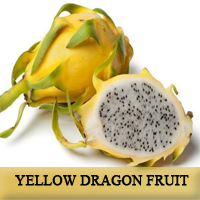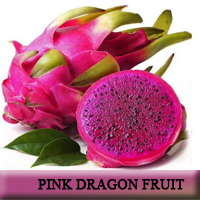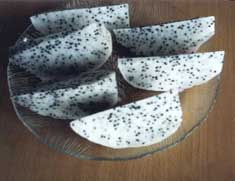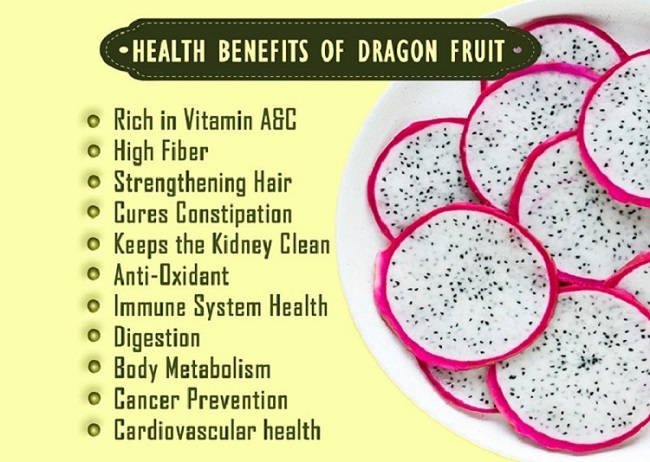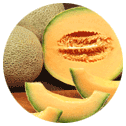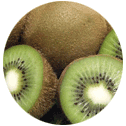Dragon Fruit
Dragon fruit is a good-looking fruit grown in Southeast Asia, Mexico, Central and South America, and Israel. It is essentially type of fruit of cactus, and the fruit around in 3 colors: some time 2 have pink skin and in white and red in colour with different flesh while another type is yellow with white flesh. Dragon fruit is low in calories and it offers numerous nutrients, including Vitamin C, phosphorus, calcium, plus fiber and antioxidants.
 Full List of Fruits
Full List of Fruits  Dragon Fruit
Dragon FruitDRAGON FRUIT
Introduction- Pitaya Fruit, Pitahaya Fruit or commonly known as the Dragon. It is a favorite to the people of Asian origin. It features a mouth watering light sweet taste, with an intense shape and color, not to forget its outstanding flowers. In addition to being tasty and cool, this is a beautiful fruit with a lot of water and other vital minerals with varied nutritional ingredients.
The dragon fruit is exactly of the Hycocereus undatus family, thus making it one of the extensive red dragon fruit in asian region. Typically, the fruit has red squash, or red flesh. The fruit originates from the dragon fruit cactus plant, which is usually appears like as vines
Taste- Dragon fruit tastes wonderfull which is sweet and crunchy, with a flavor that resembles both kiwi and pear, a cross of both... Inside, the texture is like a cross between a thin melon and a pear, but scattered with tiny crunchy seeds, like a kiwi. The taste is also fairly melon-like, in that it is bland.
Shapes- The fruit is oval, elliptical or pear-shaped.
Appearance- Selecting the fruit is very simple, simply look for full-bodied, full colored fruits. It actually looks like a wild dragon, with lots of untidy overflowing branches, parallel to the dragon wings, scales or hairs. The fruit itself does look like one too. This fruit originated from Mexico to northern South America. This is the common white dragon. It is one of the three main species of dragon fruit. The other two looking of the fruit is the red flesh and the uncommon, yellow skin/white flesh. This is the common white dragon. It is one of the three main species of dragon fruit. The other two looking of the fruit is the red flesh and the uncommon, yellow skin/white flesh. There are a variety of cultivars of dragon fruit and since they do look alike to a layman, I will just put them under their colour classifications.
Scientific Names- Hylocereus polyrhizus, Hylocereus undatus, Selenicereus megalanthus.
Other Names- Ceraus, Acanthocereus, Echinocereus, Hylocereus, Selenicereus, Stenocereus, Escontria, Myrthillocactus.
LANGUAGES
OTHER NAMES
English
Dragon fruit, Pitahaya, pitaya
Spanish
Pitahaya orejona, Pitahaya roja, Pitajava, Tasajo
French
Cierge-lézard, Fruit du dragon, Poire de chardon
German
Distelbirne, Drachenfrucht, Pitahaya
Dutch
Drakenvrucht, Pitahaya, Pitaya
Italian
Pitahaya, Pitaya
Greek
fruto tu draku
Japanese
pitaya (doragonfurutsu)
Korean
Yong-gwa
Portuguese
fruta do dragao
Swedish
skogskaktus, rõd pitahaya
Vietnamese
thanh long
Bengali
dragon fal
Tamil
Tirakan palam
Hindi
Draigan phal
The fruit is commonly eaten as raw and tastes better when chilled. It is also served as a juice. The flesh is sweet and occasionally in a tropical sorbet this fruit is served with mango. The fruit is also used to flavour drinks while syrup made of the entire fruit is used to colour pastries and candy. The squash of the fruit is used in producing an alcoholic beverage.
The fruit makes a wonderful mixture on its own or mixed with other tropical fruits. It is sometimes used in cooking for some recipes. Unopened flowerbuds of the dragon fruit can be cooked like vegetables. The plant is commonly planted as a mountaineer to cover chainlink grille. Parts of the pitahaya plant can be used to produce food colour in nature.
Current Facts:
Dragon fruits are highly concerted with Vitamin C, minerals and high fiber content. The following table shows a quality nutritional value of the dragonfruit. Mainly, these nutrients are crucial and known world over for the antioxidants they possess which usually helps in the prevention of the formation of free radical that cause cancer.
Dragon fruits are high in antioxidants, which help to fight carcinogenic free-radicals from the body. In addition, they are a good source of Vitamin C, and are wealthy in minerals, especially calcium and phosphorus. They are also low in calories and high in fiber, while the seeds have high polyunsaturated fatty acids.
| Nutritional value per 100 g (3.5 oz) | ||
| Energy | 1,100 kJ (260 kcal) | |
| Carbohydrates | 82.14 g | |
| Sugars | 82.14 g | |
| Dietary fiber | 1.8 g | |
| Protein | 3.57 g | |
| Vitamins | Quantity | %DV |
| Vitamin C | 9.2 mg | 11% |
| Minerals | Quantity | %DV |
| Calcium | 107 mg | 11% |
| Sodium | 39 mg | 3% |
Cooking:
- Dragon fruit can be eaten fresh or blended to juice.
- It can be used to flavor jams, salads, smoothies, and yogurts.
Dragon Fruit Pizza Recipe
Ingredients:
- 1 package of ready to use pre-made sugar cookie dough
- 8 ounces cream cheese
- 1/2 cup powdered sugar
- 1 tablespoon lemon juice
- 3 dragon fruit, peeled and sliced
- 3 kiwi, peeled and sliced
- 1 cup strawberries, hulled and cut in half
- 1/4 cup apricot glaze
Directions:
- Roll out cookie dough into a 12 inch round.
- Bake 10-12 minutes or until lightly browned.
- Allow to cool completely.
- Meanwhile, prepare fruit by washing and slicing it into 1/4 inch slices.
- Cream together the cream cheese, powdered sugar and lemon juice.
- When the crust is cool, top with the cream cheese mixture.
- Lay fruit in a circle on top of the cream cheese mixture.
- Spread apricot glaze over fruit.
- Chill until ready to serve.
- Any combination of fruit can be used for this recipe.
Dragon Fruit Jelly
Ingredients:
- 25 – 30 grammes agar-agar
- 100 grammes sugar
- 1 litre water
- 200 grammes of dragon fruit
- 3 pieces pandan leaves
Directions:
- Take water to a pot for boil. Add sugar, agar-agar and pandan leaves to boiled water. Stir on medium low heat till sugar and agar-agar dissolved.
- Once sugar and agar-agar completely dissolved, turn off heat. Discard pandan leaves.
- Pour mixture onto a suitable 2 inch deep tray or moulding and drop dragon fruit cubes into the mixture. Allow to cool down before chilling it in the fridge.
Dragon fruit is an exotic tropical treat for that are fluky enough to taste alls such as Thailand where they are called "Pitaya." This dragon fruit easier to find in Asian food markets. There are a variety of dragon fruit available. Red dragon fruit are the most common, but pink and yellow dragon fruits are known for an more sweet and unique flavor. If dragon fruit are difficult to come by, you may wish to look into dragon fruit agriculture by buying dragon fruit plants or cuttings. Further, dragon fruit are amazingly healthy because they are loaded with antioxidants, vitamin B, and vitamin C.
Dragon fruit and recipe are abundant because they are delicious and versatile. Here are some tips for how to prepare dragon fruit. treat for those that are lucky enough to taste them. Dragon fruit cultivation come from cactus plants grown in humid and tropical conditions such as Thailand where they are called "Pitaya." This makes dragon fruit easier to find in Asian food markets. There are a variety of dragon fruit available red dragon fruit are the most common, but pink and yellow dragon fruits are known from an extra sweet and unique flavor.
You can also take that dragon fruit and toss some slices in a salad to sweeten it up and give an exotic twist.You can puree the dragon fruit and make a dragon fruit sorbet.Or you can eat dragon fruit in the best way, slices of delicious dragon fruits bursting with flavor.













